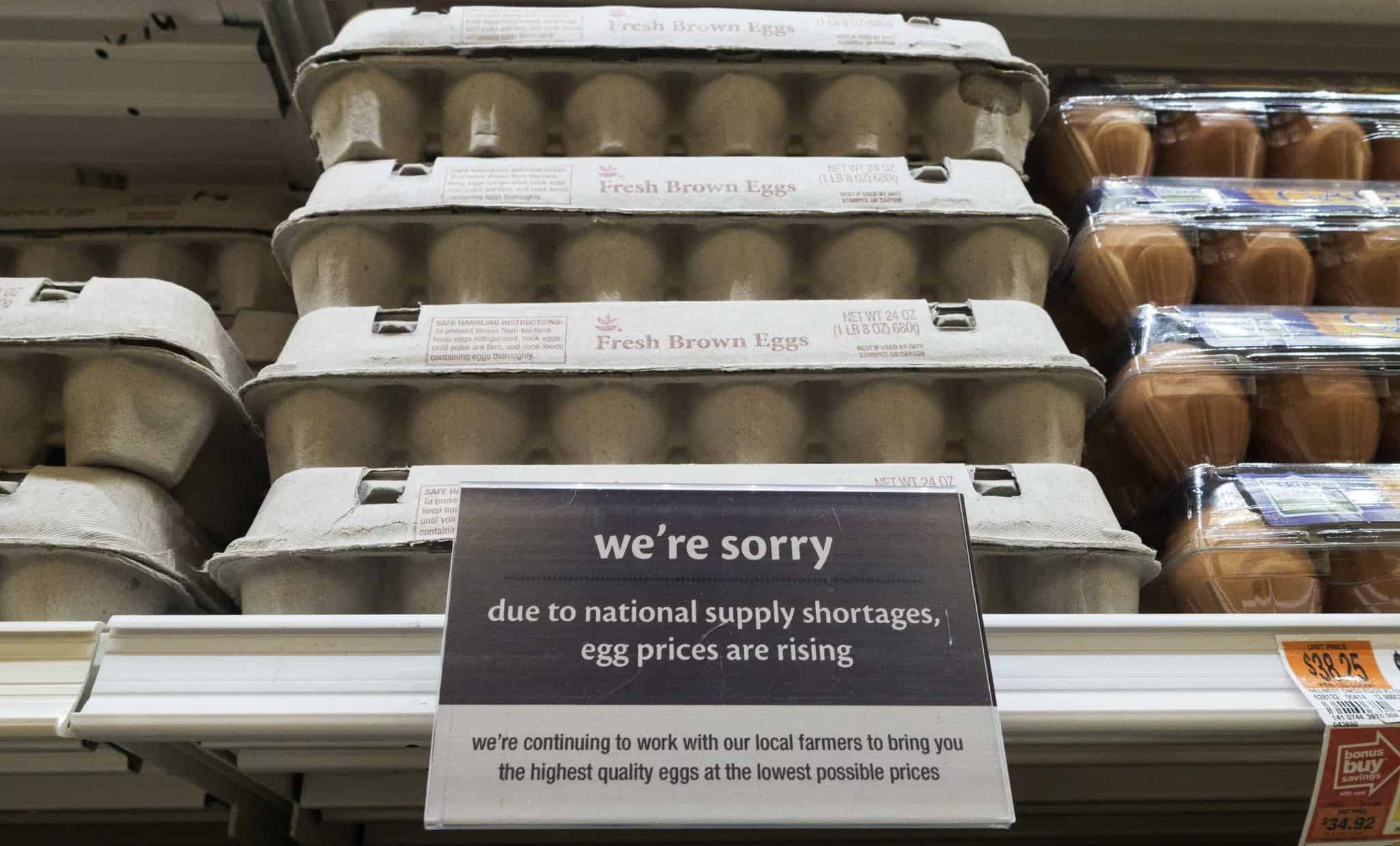The rising cost of eggs in the U.S. is denting household budgets. Americans in recent years have increased the number of eggs they consume while reducing their intake of beef and venison, according to data from the U.S. Department of Agriculture.
Egg consumption has grown in part because more families are eating them as their main protein substitute, Los Angeles Times reporter Sonja Sharp told CBS News. “Each of us eats about as many eggs as one hen can lay a year,” she said.
As demand for eggs has risen, production in the U.S. has slumped because of the ongoing bird, or “avian,” flu epidemic. Nearly 58 million birds have been infected with avian flu as of January 6, the USDA said, making it the deadliest outbreak in U.S. history. Infected birds must be slaughtered, causing egg supplies to fall and prices to surge.
Families and restaurants alike are now paying elevated prices for eggs as the outbreak impacts 47 states.
In California, for example, data shows the average price for a dozen eggs reached $7.37 last week, compared with $2.35 a year ago. The national average egg price per dozen wholesale is now $3.30, the USDA said last week. The average price for a dozen eggs by U.S. city grew to a record $3.58 in November, according to the most recent data available from the Federal Reserve Bank of St. Louis.
Sharp said prices will likely not fall again until after new chickens are born without the infection and grow to egg-laying age. More than 300 flocks of farm-raised poultry have been hit by the outbreak as of last Friday, according to USDA data.
In New York, grocery store owner Jose Filipe said that soaring egg costs have caused many customers to change their spending habits.
“I’ve seen customers gravitate from buying organic eggs now to more conventional eggs, and specifically now, the half dozen. Prices have quadrupled in about six or seven months,” he recently told CBS New York’s Jenna DeAngelis.
What is avian flu?
Bird flu is carried by free-flying waterfowl, such as ducks, geese and shorebirds, and infects chickens, turkeys, pheasants, quail, domestic ducks, geese and guinea fowl. In another major recent epidemic of the disease, it killed more than 50 million chickens and turkeys in 2014 and 2015, while causing economic losses of $3.3 billion, the USDA estimates. The agency is now researching a potential vaccine against the bird flu.
Fortunately, the public health risk related to bird flu remains low, according to the U.S. Centers for Disease Control and Prevention. Still, cooking all poultry and eggs to an internal temperature of 165 ˚F is advised as a general food safety rule.
The cost of processed eggs — used in liquid or powdered form in manufactured products including salad dressing, cake mix and chips — has also surged, adding to inflationary pressures.
The Consumer Price Index — a closely watched inflation gauge — rose 7.1% in December from the previous year. Falling prices for energy, commodities and used cars offset increases in food and shelter.
Even with the cost increases, however, eggs remain relatively cheap compared to the price of other proteins like chicken or beef, with a pound of chicken breasts going for $4.42 on average in November and a pound of ground beef selling for $4.85, according to government data.
But if egg prices remain elevated, Chicago resident Kelly Fischer said she will start thinking more seriously about building a backyard chicken coop because everyone in her family eats eggs.
“We (with neighbors) are contemplating building a chicken coop behind our houses, so eventually I hope not to buy them and have my own eggs and I think the cost comes into that somewhat,” the 46-year-old public school teacher said while shopping at HarvesTime Foods on the city’s North Side. “For me, it’s more of the environmental impact and trying to purchase locally.”

